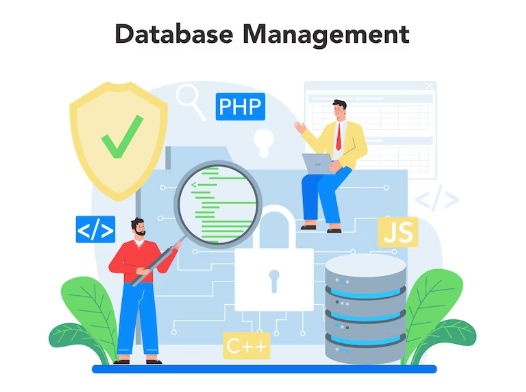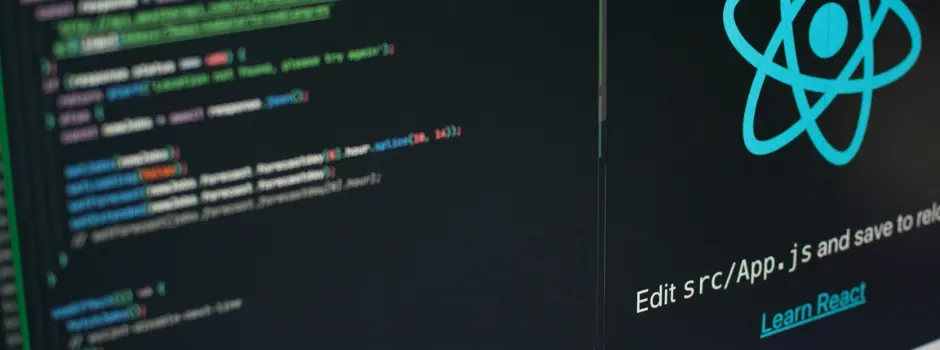
6 Best Ways to Learn Full Stack Development
Apr 04, 2025 5 Min Read 5621 Views
(Last Updated)
Do you want to become a full stack developer who creates an entire app from scratch? But you’re not sure where to start? Well, we proposed the 6 best ways to learn full-stack development.
In this blog, you will learn about the responsibilities of a full stack developer, the necessary skills required to become a successful full stack developer, and lastly, you will see the best and proven ways to learn full stack development. Let’s jump into it!
Table of contents
- What is Full-stack Development?
- Responsibilities of Full-stack developers
- Necessary skills for full stack development
- Front-End Skills
- Back-End Skills
- Databases
- APIs
- Version Control
- 6 Best Ways to Learn Full Stack Development
- Online Courses
- Webinars and Workshops
- Books
- YouTube Videos
- Communities
- Hands-on Projects
- Conclusion
- FAQs
- Q1. How do I start studying to full stack developer?
- Q2. Is it easy to learn full stack developer?
- Q3. Can I learn full stack in 3 months?
- Q4. What is the salary of a full stack developer?
What is Full-stack Development?
Full-stack development is quickly becoming one of the most sought-after skills in the technology world. It is a process of building both the front-end and back-end of an application. Due to its flexibility of front-end and back-end development, there is a huge demand for these roles in companies.
Responsibilities of Full-stack developers
A full-stack developer is skilled in multiple layers of development, ensuring smooth interaction between the front-end and back-end systems. The responsibilities include the following,
- They are responsible for creating the user interaction side of the application, ensuring it is responsive, intuitive, and visually appealing.
- They handle server-side programming, database management, and the logic that powers the application, ensuring it functions efficiently and securely.
- They work to seamlessly integrate the front-end with the back-end, ensuring smooth communication between the user interface and the server.
In the next section, let’s deep dive into the necessary skills that a full-stack developer should possess.
Necessary skills for full stack development

There are certain skills that a full stack developer should expertise. Follow the list below to start building your skills from today.
1. Front-End Skills
The most mandatory skill for full-stack development is front-end. The front end guides the user in navigating the website and allows them to interact with the application. As a beginner in front end development, you should focus on the following programming languages that are dedicated to web development.
- HTML: It is a markup language used to define the structure of a website.
- CSS: It is a stylesheet used to style the website(coloring and alignment of items).
- JavaScript: It is a scripting language used for interactivity in the website(button actions).
2. Back-End Skills
The backend of a website or an application is a part that runs on the server and manages data and functionality. It’s the opposite of the front end, which is the part of the application that users see. When a user interacts with the front end, the browser sends a request to the server. The server processes the request and returns the information to the frontend. It communicates with the front end by sending and receiving information.
As a beginner, you should start backend development with the following programming languages.
- Node.js: It is a cross-platform JavaScript run-time environment.
- Python: It is widely used for backend development due to its simplicity and readability.
- Java: It is commonly used in large-scale enterprise applications.
3. Databases
A database is a structured collection of data that is stored electronically. It can store data in the form of numbers, texts, images, videos and other types of data. There are many different types of databases. Most commonly used are,
- MySQL: It is a relational database that uses Structured Query Language (SQL).
- NoSQL: It is a non-relational database and it doesn’t use Structured Query Language(SQL).
4. APIs
Application Programming Interface(API) is an intermediary between the frontend and backend of an application. Whenever a frontend of an application requires data, an api is triggered. This api will contact the backend of an application and return the required data to the frontend.
In APIs, you should be familiar with any one of the following.
- RestAPI: Used to seamlessly connect web services, mobile applications, and a variety of software systems.
- GraphQL: APIs function like personal shoppers, delivering precisely what clients require.
- SOAP: APIs are used by web services to transmit data through HTTP and HTTPS communication methods.
5. Version Control
Version control is an integral part of software development. It aids in tracking and controlling modifications to the source code, thereby maintaining a historical record of code changes. Among various version control systems available, Git has emerged as the industry standard. There are two main types of version control systems.
- Local Version Control System(LVCS): Only one user can use LVCS and the entire codebase is stored only on their machine.
- Centralized Version Control System(CVCS): All users work with the same central repository.
- Distributed Version Control System(DVCS): Each user has their own repository and working copy.
6 Best Ways to Learn Full Stack Development

Now, you will have a basic understanding of full stack development and the skills required to become a developer. In this section, we will show you the 6 best ways you can learn full stack development in a fun and easy way. Let’s get started!
1. Online Courses
The first way is through online courses. It is the most popular and fastest way to learn full-stack development. Online courses provide you with the flexibility to learn at your own pace and relearn if you get stuck on a specific concept. There are various data science courses on the internet, from paid to free courses. People choose this way of learning because it provides all the necessary knowledge for full-stack development in the same course and this saves them the time for searching the resources separately.
If you want to learn the necessary skills required for a full-stack development starting from scratch to advance in a single course from India’s top Industry Instructors, consider enrolling in GUVI’s Full Stack Development course that not only teaches you everything about full-stack development from scratch, but also provides you with hands-on project experience and industry-grade certificate!
2. Webinars and Workshops
Webinars and workshops provide a more interactive and hands-on learning experience. Unlike passive learning methods, these events allow you to engage with instructors and fellow participants in real time.
Webinars often focus on specific topics, giving you the opportunity to dive deep into particular areas of full stack development. Workshops, on the other hand, provide practical, hands-on training where you can apply what you’ve learned immediately.
Both webinars and workshops are great for networking and gaining insights from industry professionals. They also offer a more immersive experience, helping you understand how full stack development is applied in real-world scenarios.
3. Books
One of the most reliable methods of learning full-stack development is books. Books are the traditional way of learning. It offers in-depth knowledge on specific topics and it is written based on the experience of the author so you can learn from the experience. It provides a detailed explanation for each concept using examples, illustrations and also provides exercises to help you grasp the concepts firmly.
Resources
- ASP.NET Core 3 and Angular 9: Full-stack web development with .NET Core 3.1 and Angular 9
- The Full Stack Developer: Your Essential Guide to the Everyday Skills Expected of a Modern Full Stack Web Developer
- Modern Full-Stack Development: Using TypeScript, React, Node.js, Webpack, and Docker
- Hands-On Full Stack Development with Spring Boot 2 and React
- Fullstack Vue: The Complete Guide to Vue.js
4. YouTube Videos
The most common way to learn full-stack development is through YouTube videos. Some people like to watch videos, some like to read and some like to engage in order to learn something new. If you are a person who enjoys learning through short videos and tutorials. Then, this is the right option for you.
There are tons of videos available on YouTube to learn about full-stack development. You can find approximately between 10 to 20 videos for each concept. You have to choose which suits you the best. This way may be time-consuming for searching suitable videos for each concept. But it provides in-depth knowledge.
Resources
5. Communities
The next way to learn full-stack development is by joining communities. This may be a study group in your area or a discord channel. This is the interactive way of learning full-stack development, you will find many people with similar interests and technical level to yours. You can group with them to learn and share your knowledge with other people. In this way, you will learn new things.
Resources
If you are a woman and want to join a community and learn full-stack development, you can join Guvi’s SheCode community.
6. Hands-on Projects
The final and most wonderful way to learn full-stack development is through building hands-on projects. Developing projects using the skills that you have learned is the next powerful step towards your goal. As someone new to building projects, you can follow guidelines to help create one. You can also participate in hackathons to build full-stack solutions to real-world problems within a stipulated time.
Are you confused about which project you should build? No worries, as an initial step, look for the best full-stack projects to build. Try building clone projects of already existing projects in one of the areas, such as social media, an e-commerce website, and an online course website.
Conclusion
The best ways to learn full-stack development include online courses, webinars and workshops, books, communities, YouTube videos and hands-on projects. In today’s world, by understanding the necessary skills required for a full-stack developer and following a specific roadmap, you can easily become a full-stack developer. Also, it is important to be consistent throughout your journey of becoming a full-stack developer. You can use the comment section below to ask any questions. Happy Learning!
FAQs
Ans. There are various ways you can study for full stack developers –
Watching video tutorials
Reading blogs/articles
Learning through the best courses on full stack development
Just read through any one of the resources, get yourself skilled, and get into full stack development.
Ans. Learning full stack development becomes easy when you have the will to learn, just learn all the skills required, build projects, and start implementing what you’ve learned.
Ans. Yes, you can learn full stack development in just 3 months, put all your efforts into it and learn the skills required and start applying for jobs.
Ans. The average salary of a full stack developer in India is 6LPA, which also depends on factors like skills you have, experience, etc.























![What Does a Front End Developer Do? A Beginner’s Guide [2025] 5 Feature image - What does a Front End Developer do A Complete Guide](https://www.guvi.in/blog/wp-content/uploads/2024/02/Feature-image-What-does-a-Front-End-Developer-do-A-Complete-Guide.webp)

![Top React Interview Questions and Answers! [Updated] 7 React Interview Questions](https://www.guvi.in/blog/wp-content/uploads/2022/01/Top-React-Interview-Questions-and-Answers.webp)





Did you enjoy this article?